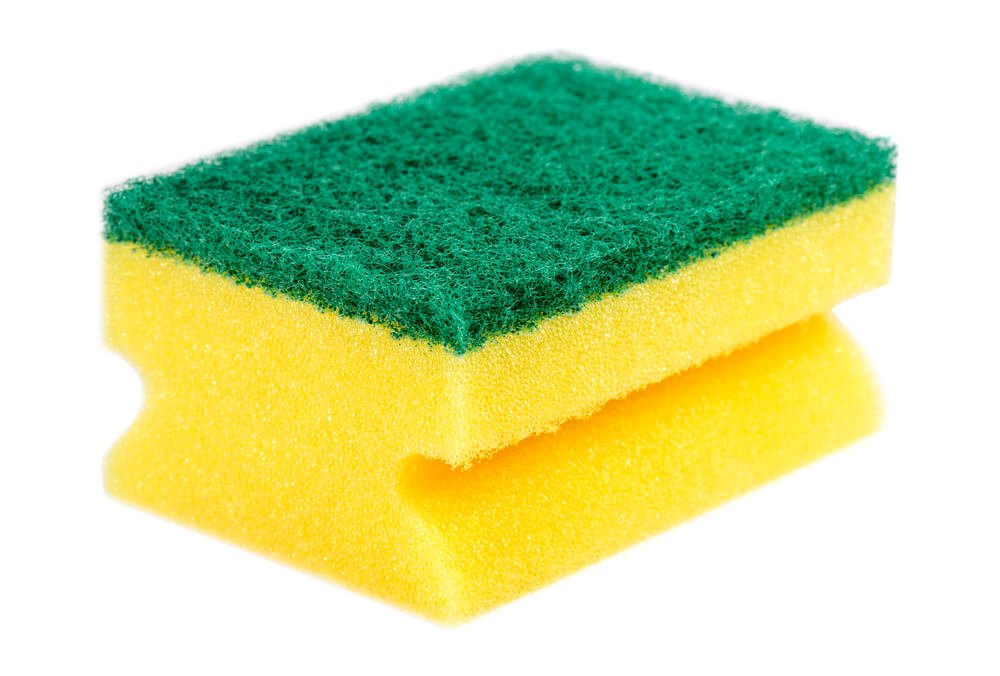Whether or not your sponge is biodegradable will depend on the materials used in the sponge.
The natural sea sponge is biodegradable but most household sponges are not.
When talking about sponges there needs to be a distinction made between natural sponges and manmade sponges.
These two different types of sponges have very different properties and are used for different purposes.
However, when referring to a ‘sponge’ most of us will immediately think of the sponge that we have in the kitchen for washing up.
So, here we’ll run you through the ins and outs of sponges, whether or not they are biodegradable and how to dispose of them properly.
Is a sponge biodegradable?
The natural sea sponge
The sea sponge is a naturally occurring material that is both biodegradable and eco-friendly.
Sea sponges are grown and collected in an environmentally friendly way to ensure that they are able to regrow even after they have been cut.
Because the sea sponge is a natural material it is able to completely decompose, making it a great choice for household use.
The typical household sponge
Most sponges that you can buy in the supermarket are the type that springs to mind when you say ‘sponge’.
Unfortunately, this type of sponge is usually not biodegradable.
This is because there is some plastic incorporated into the material which is famously known for not being biodegradable.
How long does it take a normal kitchen sponge to decompose?
If you do choose to use the everyday kitchen sponges found in most shops, normally green in yellow in color, it is worth noting that these can actually take hundreds of years to break down.
This means that they have a very negative effect on the environment.
Before you even throw the sponge out it is causing havoc on the ecosystem as the microfibers that detach from the main part of the sponge end up in our water through use.
Are silicone sponges bad for the environment?
Silicone sponges are a much better alternative to plastic sponges as they can be cleaned.
You can simply pop the silicone sponge into the dishwasher to clean it and then carry on using it as before.
Obviously, this is not the case with plastic sponges which will need to be thrown out and replaced.
For this reason, many eco companies promote the use of silicone products as their longer lifespan reduces their environmental impact.
What can I do with used sponges?
If you have a plastic sponge that can no longer serve its purpose with the washing up then do not simply throw it away.
There are many other uses that this sponge can serve in your house.
Remember, the longer you use a sponge the better it is for the planet.
Consider some of the following jobs for that old sponge: to collect dust and lint, collect water in an umbrella stand, use for dirty odd jobs (bathroom, floor, skirting etc.).
Are dishcloths better than sponges?
If you are trying to help the environment and become more eco-friendly in your home then you may think that opting for a dishcloth is better than a sponge.
Yes, dishcloths are a great alternative to sponges as they can be washed and reused multiple times.
However, one thing to keep in mind is that bacteria can quickly build up on a dishcloth, meaning that you will need to wash it regularly to keep it clean.
If you are washing the cloth by itself then you are using a lot of water and electricity to do this. So, you may be better off with a natural alternative.
Are there eco-friendly alternatives?
If you are looking to be as eco-friendly as possible then consider buying your sponges from a company that is environmentally conscious.
There are some great alternatives to plastic or foam dish sponges such as ones made from coconut fibers and vegetable fibers.
Not only are these biodegradable but the companies behind a lot of these products are also affecting the planet as little as possible throughout their entire production process.
Can sponges be washed and reused?
If you have any old dish sponges that seem to reached the end of their lifetime, do not worry there is a way that you can clean them so that they can be reused, reducing the amount that you use in a year.
To do this simply clean it well, this can be done with dish soap and warm water, to ensure that all of the food particles have been removed from the sponge.
Next, place the sponge in the microwave for half a minute to allow it to dry fully.
Alternatively, you can try putting the sponge into the dishwasher to ensure that it is cleaned of all food and bacteria.
Doing this will help to prolong your sponge’s lifespan.
Conclusion
When it comes to sponges there are two main categories: natural and unnatural.
This is the main distinction between the sponge’s effect on the planet.
Basically, natural sponges are naturally occurring, can be harvested sustainably and are completely biodegradable.
In sum, they are good for the planet.
On the other hand, the unnatural sponge, the one that most of us have in the kitchen, is bad for the planet.
This is because they typically contain plastics that are not biodegradable and can hundreds of years before they begin o decompose.


